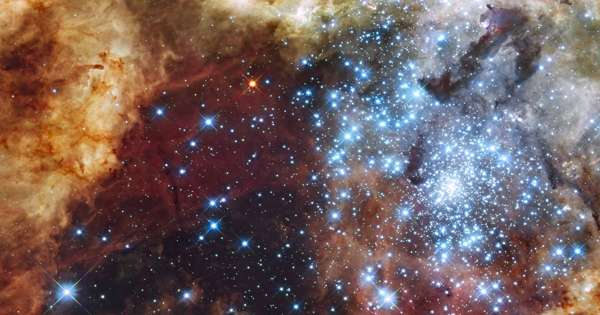University of California Berkeley and Columbia University astronomers have discovered a brand-new binary millisecond pulsar using the Green Bank Telescope (GBT). The recently discovered pulsar, PSR J0212+5321, is in close proximity and is a member of the “redback” category.
The finding was reported June 8, 2023, on the arXiv pre-print server.
Millisecond pulsars (MSPs) are the pulsars that rotate the fastest and have rotation times under 30 milliseconds. It is thought by researchers that they develop in binary systems when the originally more massive component evolves into a neutron star, which is subsequently spun up by matter accretion from the secondary star.
“Spider pulsars” are a subclass of extreme binary pulsars with companion stars that are semi-degenerate. If the companion star has an exceptionally low mass (less than 0.1 solar masses), these objects are further classified as “black widows,” whereas they are known as “redbacks” if the secondary star is larger.
Future observations and long-term timing of PSR J0212+5321 will allow us to measure its spin period derivative to calculate it spin-down luminosity, which is likely one of the highest among MSPs based on its high X-ray luminosity.
The researchers
Now, a group of astronomers led by Karen I. Perez of Columbia University reports the discovery of a new redback. The pulsar was detected during a targeted GBT search of the redback optical candidate coincident with the gamma-ray source 3FGL J0212.5+5320.
“We have discovered the suspected rotation-powered MSP in the 3FGL J0212.1+5320 gamma-ray system with the Robert C. Byrd Green Bank Telescope using the L-band receiver at a center frequency of 1,501 MHz utilizing the Breakthrough Listen digital receiver,” the scientists wrote in the research paper.
PSR J0212+5321, estimated to be located some 3,750 light years away, has a rotation period of about 2.11 milliseconds and dispersion measure of approximately 25.7 pc/cm3. The orbital period of the system was measured to be nearly 0.87 days.
PSR J0212+5321 is thought to endure wide-orbit eclipses, like other redbacks, as well as scintillation and dispersion measure delays brought on by its interactions with its companion and surroundings. According to the astronomers, PSR J0212+5321 has the longest binary period eclipsing MSP that has ever been observed.
The study also discovered that the PSR J0212+5321 system exhibits a comparatively high X-ray luminosity, one of the highest observed among redbacks in the pulsar state, and a mass ratio at a level of 0.247.
PSR J0212+5321 needs to be further studied in order to properly grasp its features and behavior, according to the paper’s authors.
“Future observations and long-term timing of PSR J0212+5321 will allow us to measure its spin period derivative to calculate it spin-down luminosity, which is likely one of the highest among MSPs based on its high X-ray luminosity,” the researchers concluded.
















